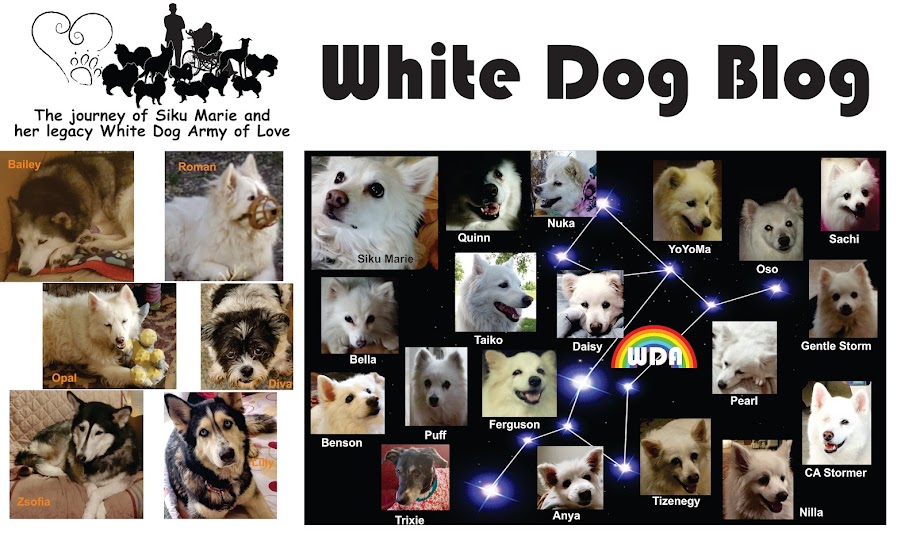Dr. Julia called midmorning. There was no dental. In the pre-surgery check and in answer to my letter of questions and concerns, she discovered Siku has what she thinks is a pancreatic abscess the size of a soft ball resting between her stomach and small intestine. THIS is why she is not eating; there is no room for food. Our brilliant vet is consulting and researching the most up-to-the-minute treatment.
After Dr.
Julia’s call with preliminary findings about Siku’s failure to eat. I looked up
Pancreatic Abscess and my heart sank at the treatment and survival rates. Dr.
Julia and I exchanged information several times across the day as we gained knowledge in our differing avenues of research; our information agreed agreed but my amazing wonderful vet had
done some out of the box thinking and went back to Siku.
A pseudocyst, not an abscess, seemed like an even closer fit of the symptoms. Both are VERY similar and rare; both demand to be taken seriously. Treatment and recovery options are MUCH more favorable for this. (BIG momma
sigh of relief).
Pancreatic
pseudocysts are non-epithelial lined cavity lesions filled with fluid
containing pancreatic cells and/or pancreatic enzymes. They are a common
complication of acute or chronic pancreatitis in humans, and are seen less
frequently in dogs and cats.
Clinical
signs are usually nonspecific and mimic those of pancreatitis. On abdominal
ultrasonography, a cystic structure in close proximity to the pancreas can be
identified. Aspiration of the pseudocyst is relatively safe and should be
attempted for diagnostic and therapeutic purposes. Fluid from a pancreatic
pseudocyst should have few cells and should not contain any evidence of
inflammation. Pancreatic pseudocysts can be treated medically or surgically.
Medical management involves ultrasonographic-guided percutaneous aspiration and
close monitoring of the size of the pseudocyst.
Siku is home
now and has begun a course of antibiotics as well as a strict liquid diet. She
is pretty wiped out from her experience and not excited by the bone broth offered for her dinner. But she made me smile by managing to choke down two tiny bites of cheesecake, one of her favorite desserts.
On Monday
she will return to Dr. Julia who will use ultrasound to guide the drainage of
the bubble and receive antibiotics via iv. It should be day surgery and then
she can come home. But the thought is that the beginning of the week gives us
the week to bring her into vet and track progress without interruption of
weekend.
Since this
condition can return and is a result of pancreatitis, Siku will likely need
regular checks of her pancreas enzyme levels to avoid further issues. Paws and fingers crossed and asking all of
the Rainbow Bridge Army to look over their leader, THIS will be the solution
and we will not need to fear abscess.
Please send your amazing powerful positive thoughts. Unlike early, tonight we have hope.


2 comments:
All our prayers little furiend, surrounding woo in healing huskerboo and elkie love,
Nuk & family
Prayers from all of us too dear Siku, we're thinking of you.
Post a Comment